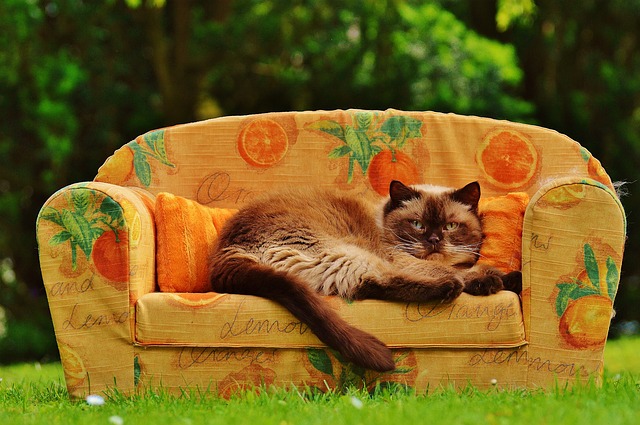Whilst being physically fit is important for mental wellbeing it is also crucial for living longer. I know that’s obvious but the majority of us, me included, still don’t get it.
Here Professor Merlin Thomas of the Baker IDI Heart and Diabetes Institute who works extensively with patients with diabetes and their doctors, explains why it is time to get off the couch.
Most of us really aren’t that active. This is not because we never go for a run, play sport or go to the gym. It is simply because most of our lives are spent sitting at a desk, in a car, around the meal table or on the couch at home watching TV (or reading really interesting books).
After hard days working like a dog, we’re exhausted! But very likely this work involved sitting on our behind for the most part of 10 hours.
Most of us haven’t moved enough each day to burn as many calories as there are in a bowl of ice cream. This is what’s known as being sedentary, and is an all too common reality of modern lives.
In our distant past, we used to be ‘hunters and gatherers’. We would walk or run on average somewhere around 16 kilometres (or 10 miles) every day, just hunting and gathering. This was the equivalent of taking the good part of 20,000 steps each day. For our well-adapted ancestors, being active was a matter of life and death. To survive the harsh and impoverished environment, we had to keep moving. This was our strength.
By comparison, today we hardly move at all. Modern adults take an average of 7500 steps each day (or just less than 6 kilometres). However, a typical modern office worker may only take 2000 steps a day. This is the equivalent of moving no more than 1.6 kilometres or walking a mile each and every day.
The more steps you walk, the better it is for you
Unlike our ancestors, we don’t really have to move to survive. We won’t be left behind. We can easily get by in our opulent world, taking public transport, driving in our car or just strolling along to the pantry, without going the (nine) extra miles.
But there’s getting by, and then there’s being healthy.
The big problem in today’s environment is that not only do we eat very differently, but we are also over ten times less active. And this mismatch now affects our chances of survival. Our sedentary life increases our risk of developing many common health problems including obesity, heart disease, high blood pressure, diabetes, depression, weak bones and some cancers.
For example, people who rarely undertake regular physical activity have, on average, twice the risk of heart attacks when compared to active individuals. A similar difference is observed if we compare an average smoker to the risks of a non-smoker.
It is thought that every year, about one in eight deaths in the world are now attributable to being sedentary, making it the fourth leading cause of death globally. This equates to more deaths caused by people being inactive than from smoking.
If we truly want to survive, it means not only spending more time being active and getting fitter, but spending less time sitting still, being a couch potato.
WHAT SHOULD WE DO?
There are many different kinds of exercise we can do. Each has its own benefits and limitations. The best exercise is the one we are able to do regularly and enjoy, rather than as an optional ‘add on’ that we sometimes do ‘when we have the time’ (in other words, almost never). We don’t keep doing something from which we derive no pleasure. That is called a punishment.
Some kinds of exercise are aerobic. This means physical activity that burns fuel using oxygen as the catalyst. It easy to recognize aerobic exercise because we have to breathe harder to get the oxygen we need. Most continuous activities of more than 3 minutes are aerobic, like walking, jogging, cycling, swimming, rowing, dancing, hiking, and sports such as football, soccer, squash and tennis.
Aerobic sports, such as tennis, are a fantastic way to stay active and have fun at the same time.
It is generally recommended that all adults should undertake regular aerobic exercise in sessions of 30 minutes or more three to five days a week.
Ideally we should get some aerobic exercise on most days. The aim is to get us to a point where we are breathing harder for extended periods of time.
At the same time our heart will be beating faster to deliver the oxygen to our muscles. This combination allows aerobic training to increase the healthy capacity of our heart, lungs and circulation.
Another kind of activity is anaerobic exercise. This means undertaking short bursts of intense exertion at nearly 100 per cent effort, like sprinting or resistance training.
Because the energy required for this kind of activity is at or above the maximal ability to supply oxygen to fuel the muscles, anaerobic exercise must rely on fuel already stored within the muscles themselves. This energy store is limited and maximal exertion cannot be sustained for more than 2 to 3 minutes before exhaustion sets in.
By specifically burning up our muscle stores, anaerobic exercises set in motion adaptations that build strength, endurance and the size of our muscles.
Exhausted muscles are also hungry and need to replenish their store, which helps to keep our stored fat levels down. This is why some people believe that weight loss is better with anaerobic exercise than aerobic sports. But it probably matters more that we do it regularly than what we actually do.
Aerobic and anaerobic exercises are often combined (and probably best combined) when short bursts of high intensity (all-out) exertion are mixed with intervals of lower-level aerobic activity. One obvious example is sport: sudden maximal exertion mixed with aerobic movement while being competitive or having fun.
Another more formal way to get both aerobic and anaerobic training is known as ‘high-intensity interval training (HIIT)’. For example, deliberately incorporating short periods of jogging as part of a walking program, progressing to sprints with alternate periods of walking or jogging.
Interval training is more effective in burning fat and getting fit than sustained moderate intensity activity for the same or longer period. It is also time efficient, making the most of limited time to exercise. It can also be quite grueling. But that’s actually the point.
THE BOTTOM LINE
If we truly want to survive for the longest period of time that we can, we need to spend more time being active and getting fitter, and less time being a couch potato. This is harder than it sounds.
Add in 5 minutes every hour of the day dedicated to moving instead of sitting. Then add a dedicated exercise time on top, to make up for what we lose by sitting. And do all this regularly enough to get fitter than we were before. All this takes time. But of all the things we can do for our health, the dividends from any investment in physical activity may be more meaningful than anything else we can buy into.


